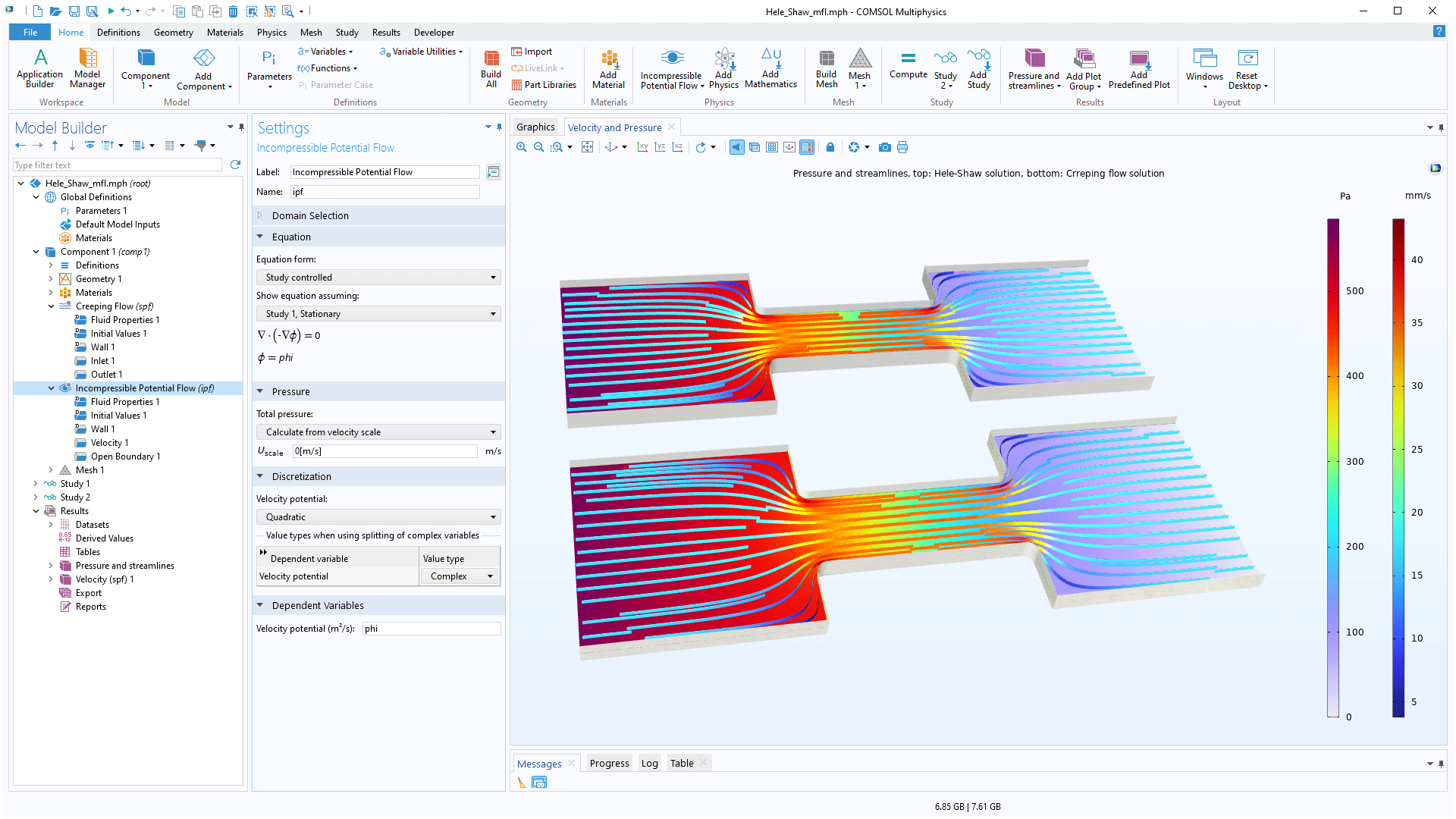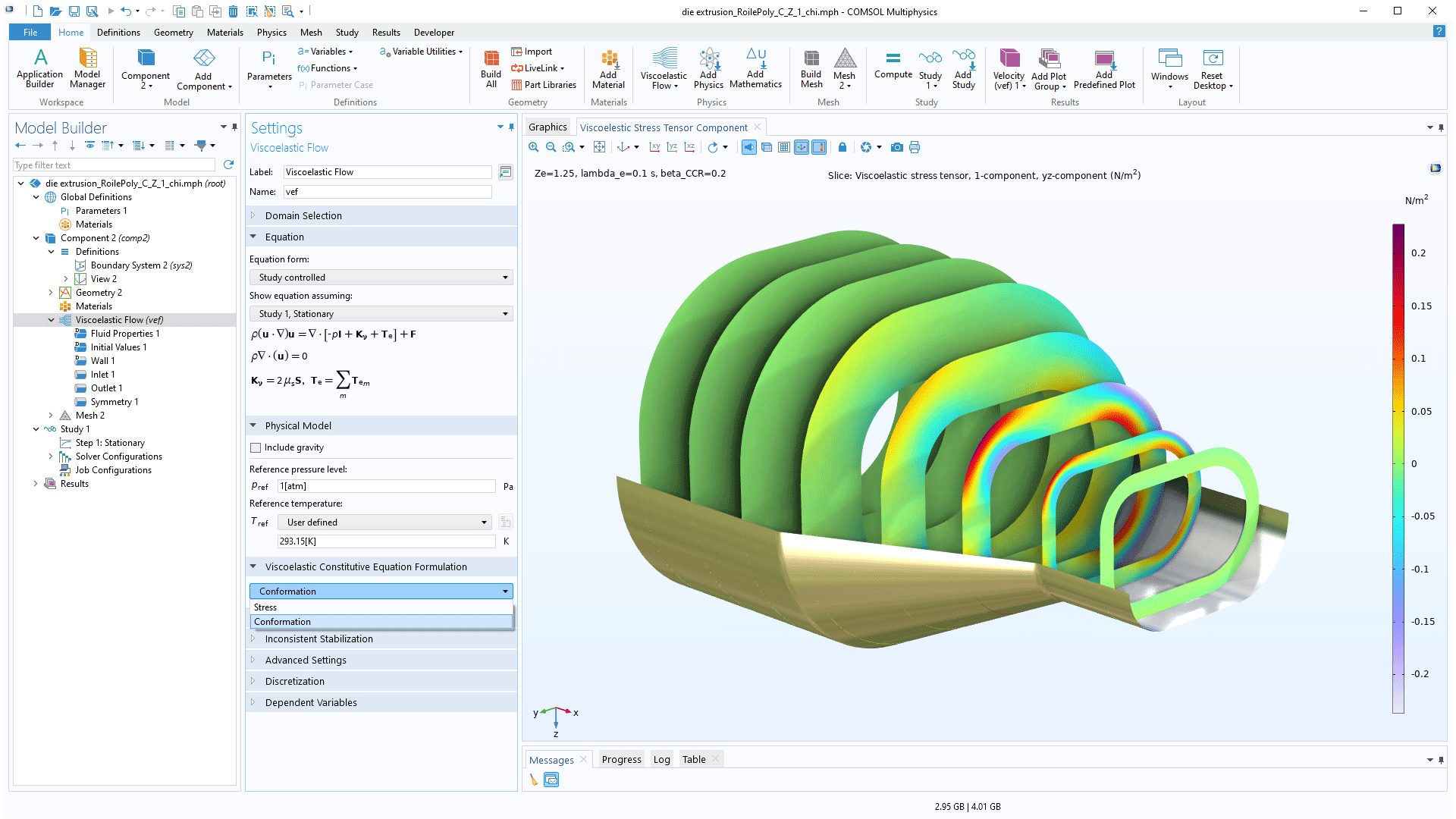support@comsol.com
Polymer Flow Module Updates
For users of the Polymer Flow Module, COMSOL Multiphysics® introduces a new formulation for viscoelastic flow and an interface for initializing laminar flow models or performing fast simulations of flow in Hele-Shaw cells. Learn more about these updates below.New Conformation Formulation
The Polymer Flow Module introduces a new conformation formulation that expands the ability to model viscoelastic flows and is more accurate for flow-dependent material parameters. The new formulation can be used to model, for example, polymer extrusion. You can find this option in the settings for the Viscoelastic Flow interface, under the Viscoelastic Constitutive Equation Formulation setting.
Flow Initialization and Hele-Shaw Flow
A new Incompressible Potential Flow interface under the Potential Flow section has been added to the Fluid Flow branch. Flow that is simultaneously solenoidal and irrotational can be represented as incompressible potential flow, and in many scenarios, this approach provides reasonably accurate approximations that solve quickly. This interface can also be used to obtain initial values for more complex fluid flow models including rotational effects. In addition, potential flow can be used to model creeping flow between parallel plates in, for example, Hele-Shaw cells.


